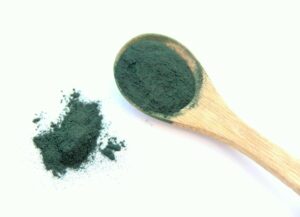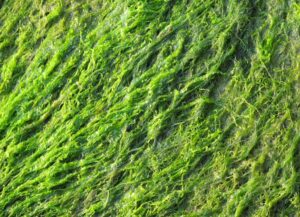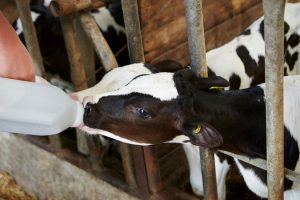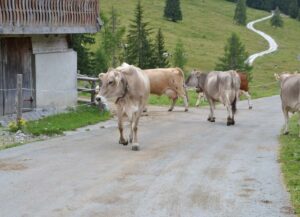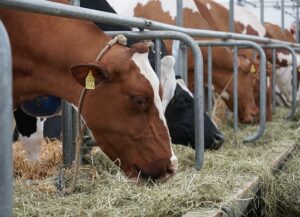Fernando Díaz
Berry fruits contain vitamins (C, E, folic acid) and other biologically active substances such as tannins, saponins, flavonoids, phenolic acids… that may be beneficial for ruminants. These substances can potentially stimulate the microbial metabolism in the rumen and improve fermentation of nutrients. Berry fruits are processed to produce value-added products such as juices, jams, and jellies, and during this industrial process large amounts of co-products are produced and used for composting, combustion or animal feeds.
Polish researchers evaluated the effects of black current seed residues obtained from a fruit juice processing plant on milk production performance of dairy cows. After separation from dried pomace, the seeds were crushed, and oil was extracted using supercritical carbon dioxide as a solvent. The black current seed residues contained 26.2% protein in a dry matter basis (DM) and 30.4% crude fiber. Fat concentration was 5.8% with linoleic and linolenic acids being the major fatty acids (45.9 and 27.2% of fatty acids, respectively). In addition, the residue was rich in flavonoids (18.3 mg/100 g) and anthocyanins (37.6 mg/100 g).
The investigators tested the seed product in a commercial farm in which 30 Polish Holstein-Friesian lactating dairy cows were allocated to two feeding groups. Both groups received a corn silage-based diet in the feedbunks (15.7% protein; 39.2% NDF). In addition, cows were supplemented with either 2 kg/day of a commercial concentrate or 2 kg/d of the seed residue supplied by a computer-controlled feeder station. The concentrate was similar in fiber content than the seed residue (30.3% DM) but slightly lower in protein (21% DM). The daily DM intake for each group was maintained at 21.0 ± 0.4 kg during the experiment.
The results of this study were published in Journal of Dairy Science, and these were the main findings:
- Milk performance was not affected by the inclusion of the seed residue in the diet. On average, cows produced 30 kg of milk fat with 4.14% fat and 3.48% milk crude protein.
- Methane production, continuously measured by infrared methane analyzers installed in the feeder stations, was similar in both diets (320 μL/L).
- Feeding the black current seed residue; however, reduced the cost of feeding the cows by 18%. The authors estimated that the cost of 1 kg of concentrate feed was approximately €0.21, whereas the cost of the seed residue was €0.02/kg.
In conclusion, there were no negative effects in milk performance for feeding a black current seed residue in this study. Feeding berry seed residues is beneficial from an economic and environmental perspective.
Reference
Magdalena Bryszak, Malgorzata Szumacher-Strabel, Mohamed El-Sherbiny, Anna Stochmal, Wieslaw Oleszek, Edward Roj, Amlan Kumar Patra, and Adam Cieslak. 2019. Effects of berry seed residues on ruminal fermentation, methane concentration, milk production, and fatty acid proportions in the rumen and milk of dairy cows. J. Dairy Sci. 102:1257–1273.



